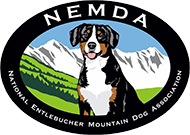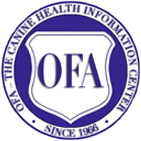AKC Entlebucher Breed StandarD
The official breed standard for the Entlebucher Mountain Dog. Our updated breed standard became effective on June 13, 2023.
General AppearanceThe Entlebucher Mountain Dog (Shepherd Dog from Entlebuch, or Dog of the Alpine Herdsman) is a native of Switzerland, and the smallest of the four tri-colored Swiss Sennenhund breeds. Swiss farmers have historically used the Entlebucher to move cows from pasture to pasture in the Alps. Their keen intelligence, speed and agility also made them useful for the management of other large animals such as horses and hogs. The Entlebucher is a medium-sized, compact, strongly muscled, elongated drover. He has a short, hard and shiny coat, bright black with symmetrical markings of pure white on blaze, muzzle, chest, and feet; shades of rich fawn to mahogany are present on the eyebrows and between the black and white markings. Prized for his agreeable nature, ease of training, and devotion to family, the Entlebucher possesses an excellent work ethic, and the ability to work alone or in harmony with his master. Given a job, he transforms from a lively, high-spirited playmate, to a serious, tireless, self-assured dog of commanding presence. Although primarily a drover, Entles excel at competitive sports and are willing and enthusiastic partners in any athletic canine activity chosen by their master. Purpose and heritage have resulted in an unusually intense bonding between the Entlebucher and his master; however, the Entlebucher should not be considered a breed for the casual owner. He will remain an active, highly energetic dog for his entire lifetime. Because of the guardian traits of this breed, thorough socialization is required during puppyhood; typically, Entles are indifferent to, or somewhat aloof with, strangers. Size, Proportion, SubstanceDogs - 17.5 – 20.5 inches, Bitches - 16.5 to 19.5 inches. Ratio of height at withers to length of body, 8:10 - length to height ratio 10 to 8 measured from point of shoulder to point of rump and ground to withers. Strongly muscled, agile, balanced dog with ample bone; but never overdone. Size alone should never take precedence over type, balance, soundness and temperament. Note that too small a dog generally lacks the power required and too large a dog may lack the agility and mobility desired in a herding dog. Oversize: A male over 20.5 inches will be disqualified, A bitch over 19.5 inches will be disqualified. Undersize: A male under 17.5 inches will be disqualified, a bitch under 16.5 inches will be disqualified. The minimum height ranges set forth shall not apply to dogs or bitches under twelve months of age. | HeadIn harmonious proportion to the body, slightly wedged-shaped; clean. Head planes of muzzle and skull more or less parallel. Ratio of muzzle to skull 9:10. Expression - Alert, attentive, and friendly. Eyes - Must be brown, darker eye preferred. Slightly small, roundish shaped, with well fitted, black pigmented rims. Disqualifying fault - Blue eyes or yellow hawk eyes. Ears - Not too big, set on high and relatively wide. When alert, are slightly raised at set-on, turned forward; in repose lay flat and close to head and form a nearly level plane with topskull. Firm, well developed ear-cartilage. Flaps pendulous, triangular, rounded at tips. Skull - Flat on top, broadest between set-on of ears, slightly tapering towards muzzle. Occipital bone barely visible. Frontal furrow barely pronounced with minimal stop. Muzzle - Strong, well chiseled, clearly set off from slightly pronounced cheeks, tapering but not pointed or snipey. Bridge of nose is straight. Whiskers to be left natural. Nose - Black. Lips - Close fitting to jaw, with black pigmentation. Bite - Scissor bite preferred, even bite tolerated. Disqualifying faults - Overshot or undershot jaw; wry mouth. Neck, Topline, BodyPleasing smooth merge of neck into topline. Neck - Medium length, strong and clean, merging smoothly with the body. Topline - Sturdy and level. Body - Strong, slightly elongated, length to be in rib cage and not in loin; length to height ratio 10 to 8 measured from point of shoulder to point of rump and ground to withers. Chest - Capacious, broad, deep, and reaching to the elbows; well sprung ribs. Underline - Slightly tucked up. Back - Straight, firm, broad. Loins - Strong, flexible. Croup - Slightly sloping, relatively long. Tail - Natural tail or docked tail is equally acceptable. Natural tail set-on in continuation of the gently sloping croup. In motion can be elevated but never touching the back. Ring-tails highly discouraged. |
ForequartersStrongly muscled but not too heavy. Shoulders are laid back, flat lying, well-muscled and never loose. Upper arm length equal or slightly shorter than shoulder blade. Angle of shoulder blade forming an angle of 110 to 120 degrees. Elbows lying well onto the body, turning neither in nor out. Forelegs are short, sturdy, straight and parallel; neither too wide nor too close together. Seen from side placed well under the body. Pastern seen from front in straight continuation of the forearm; seen from side slightly angulated and relatively short. Paws point straight forward; compact, slightly rounded with well-arched toes. Pads coarse and robust. Dewclaws - May be removed on the front legs. Nails - Short, strong; any combination of black or white. | HindquartersWell-muscled. Hind legs not too close together; from behind, straight and parallel. Upper thigh - Fairly long, broad and strong. Lower thigh - Approximately equal length to upper thigh; clean. Stifle - Well angulated. Hock joint - Strong; turns neither in nor out. Hock - Relatively short, perpendicular to the ground when dog is standing naturally; from the rear, parallel to each other. Rear dewclaws - Should be removed. Rear feet - Overall description same as front. |
CoatDouble coat. Topcoat short, close fitting, harsh and shiny. Undercoat dense; of varying color. Wavy or soft coat tolerated but not preferred. Disqualifying fault - Single coat. ColorTricolor. Basic color must be black with tan (fawn to mahogany) and white markings, which should be as symmetric as possible. The tan markings are placed above the eyes, on cheeks, muzzle, either side of the chest, under the tail, and on all four legs. On legs, the tan is situated between the black and the white. Small tan oval islands on cheeks are desired. White markings include a distinct small blaze, which runs without interruption from top of head over bridge of nose and can wholly or partially cover the muzzle. White from chin to chest without interruption. An inverted cross on chest desirable. In full-length tail, white tip is desirable. White on all four feet. Undesirable but tolerated - small white patch on the nape of the neck (not more than 2 inches), high boot, socks and bib. Color and markings should not take precedence over overall soundness, balance and temperament. GaitGround covering, free, fluid movement with good reach and strong drive from rear. As the speed of the gait increases, legs converge - the rear more pronounced. | TemperamentThe Entlebucher is a confident cattle dog, neither shy nor vicious; may be reserved with strangers. He is lively, active, persistent, self-assured, and determined. Cheerful and capable of learning, he is loyal and protective of family, herd and property. He is highly intelligent, versatile and adaptable with a strong willingness to work; is quick and responsive to commands from his owner making him especially suited as a companion, herding and general all-purpose dog. FaultsAny departure from the foregoing points must be considered as a fault, and the seriousness with which the fault should be regarded should be in exact proportion to its degree. DisqualificationsOversize A Male over 20.5 inches will be disqualified, A Bitch over 19.5 inches will be disqualified. Undersize: A male under 17.5 inches will be disqualified, a bitch under 16.5 inches will be disqualified. The minimum height ranges set forth shall not apply to dogs or bitches under twelve months of age. |





